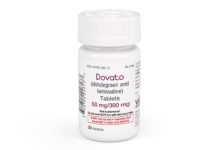To compare the frequency and risk factors of toxicity-related treatment discontinuations between raltegravir and dolutegravir.
Results: Of 4041 patients initiating ART containing raltegravir (n = 2091) or dolutegravir (n = 1950), 568 patients discontinued ART during the first year, corresponding to a rate of 15.5 [95% confidence interval (CI) 14.5–16.9] discontinuations per 100 patient-years. Only 10 patients on raltegravir (0.5%) and two patients on dolutegravir (0.1%) demonstrated virologic failure. The main reason for ART discontinuation was convenience expressed as patient’s wish, physician’s decision, or treatment simplification (n = 302). Toxicity occurred in 4.3% of patients treated with raltegravir and 3.6% with dolutegravir, respectively. In multivariable analysis, the only independent risk factor for discontinuing ART because of toxicity was female sex (hazard ratio 1.98, 95% CI 1.45–2.71, P < 0.001).
Neuropsychiatric complaints were the most commonly reported toxic adverse events and more frequent in the dolutegravir (n = 33, 1.7%) compared with the raltegravir group (n = 13, 0.6%). Risk of discontinuation for neurotoxicity was lower for raltegravir than for dolutegravir in multivariable analysis (hazard ratio 0.46, 95% CI 0.22–0.96, P = 0.037).
Conclusion: In this, large cohort raltegravir and dolutegravir-containing regimen demonstrated a high virologic efficacy. Drug toxicity was infrequent and discontinuation because of neuropsychiatric events within the first year of treatment was only marginal higher with dolutegravir compared with raltegravir. However, monitoring of neurotoxic side-effects of dolutegravir is important.
Introduction: Raltegravir and dolutegravir are currently among the most commonly used integrase strand transfer inhibitors (INSTI), which are part of preferred antiretroviral therapy (ART) regimens according to various guideline boards such as the International AIDS Society and the European AIDS Clinical Society.[1,2] Both agents show a very high antiretroviral potency and, in particular for dolutegravir, a very low risk of virologic failure and development of drug-associated resistance. Further beneficial characteristics of both INSTIs are the excellent tolerability, the low interaction potential as well as the excellent penetration into the central nervous system.[3,4,5,6] No specific organ toxicity associated with raltegravir and dolutegravir was identified in randomized clinical trials. Owing to these favorable characteristics, the once-daily administration, and the low dosage allowing for fixed-dosed combination, the use of dolutegravir in the treatment of HIV-infected patients has rapidly increased since the approval in 2013.
However, recent reports, mainly from retrospective data and smaller cohorts, raised concerns about the safety of dolutegravir in real-life settings with higher than expected discontinuation rates, particularly in respect of neuropsychiatric adverse events.[7–9,10]
The aim of our study was to compare the frequency and risk factors of discontinuation between dolutegravir and raltegravir because of any reason and more specifically because of toxicity adverse events in a large cohort of HIV-infected individuals.


 ПОИСК ПО САЙТУ
ПОИСК ПО САЙТУ  поиск по ресурсному центру
поиск по ресурсному центру 



